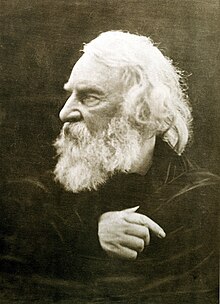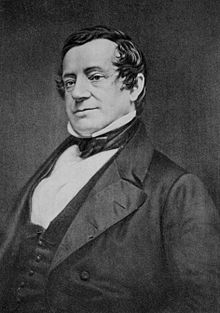Plot Summary
Act I opens in Willy Loman’s house in Brooklyn. Willy, a traveling salesman of 63, is exhausted after years of making his trips. (Even by the end of the play, we do not know what product he sells.) He has yet to reach a level of success that would allow him to stop traveling and afford the household bills that always seem to swallow his diminishing wages. We learn that Willy’s grown son, Biff, has returned to visit. And we come to know Willy’s character as he complains to his wife Linda about his disappointment in Biff’s failure to find a steady, serious job. Willy is tired, confused, and argumentative, a man who loves his son and has tried to infuse him with a salesman’s enthusiastic optimism and self-confidence.
 In the rest of Act I, through various flashbacks that might also be Willy’s memories, we become familiar with the salesman’s philosophy of success that has guided Willy to his current less-than-successful state. Compared with his neighbor Charley and Charley’s son Bernard, Willy and his sons Biff and Hap are athletic, rather than studious; in Willy’s mind, a likable personality is more important for success than academic grades. Willy endorses Biff’s cheating at school; and, we learn, Willy himself cheated on his wife by having an extramarital affair with a woman in Boston. Linda informs Biff and Hap she has discovered that Willy has secretly started to contemplate suicide. The evening of Act I winds down as Biff and Hap attempt to cheer up Willy by promising to go into business together.
In the rest of Act I, through various flashbacks that might also be Willy’s memories, we become familiar with the salesman’s philosophy of success that has guided Willy to his current less-than-successful state. Compared with his neighbor Charley and Charley’s son Bernard, Willy and his sons Biff and Hap are athletic, rather than studious; in Willy’s mind, a likable personality is more important for success than academic grades. Willy endorses Biff’s cheating at school; and, we learn, Willy himself cheated on his wife by having an extramarital affair with a woman in Boston. Linda informs Biff and Hap she has discovered that Willy has secretly started to contemplate suicide. The evening of Act I winds down as Biff and Hap attempt to cheer up Willy by promising to go into business together. In Act II, which encompasses the day following the evening of Act I, Willy asks his boss for a new, non-traveling job. Instead of being rewarded for years of service, Willy is fired because he has not been able to sell enough. Bewildered, he asks his friend Charley for another of many loans and, while doing so, meets Bernard, now a successful lawyer. In the evening, Willy joins Biff and Hap at a restaurant and eventually tells them his bad news; unable to depress a father who wants good news at the end of a terrible day, Biff fails to tell Willy that he did not get the loan that would have made it possible for Hap and him to start a business together. The scene then changes to years earlier, when Biff comes to Boston just after flunking math, which has endangered his chances for college by preventing him from graduating high school. Biff there discovers Willy is having an affair.
In Act II, which encompasses the day following the evening of Act I, Willy asks his boss for a new, non-traveling job. Instead of being rewarded for years of service, Willy is fired because he has not been able to sell enough. Bewildered, he asks his friend Charley for another of many loans and, while doing so, meets Bernard, now a successful lawyer. In the evening, Willy joins Biff and Hap at a restaurant and eventually tells them his bad news; unable to depress a father who wants good news at the end of a terrible day, Biff fails to tell Willy that he did not get the loan that would have made it possible for Hap and him to start a business together. The scene then changes to years earlier, when Biff comes to Boston just after flunking math, which has endangered his chances for college by preventing him from graduating high school. Biff there discovers Willy is having an affair.In the present, when Biff and Hap return to the house, their mother reproaches them for abandoning Willy in the restaurant. Delusional, Willy is planting a garden in the dark and having an imaginary conversation with his elder brother Ben, who made a fortune in diamonds as a young man. Biff tries to explain the ungranted loan to Willy, as well as his decision to leave so as not to disappoint Willy ever again. Willy believes Biff has been unsuccessful out of spite for him, but when Biff begins to cry, Willy sees Biff’s love for him. Inspired by this realization, but obviously disoriented, Willy sneaks away that night and kills himself in a car accident, thinking his life insurance money will give Biff a new start and that a well-attended funeral will prove his own popularity. In a very short third act that Miller calls a “Requiem,” we see that almost no one has attended the funeral. Although Hap defends Willy’s “good dream,” Biff is subdued and Linda weeps as she asks Willy’s grave why he did such a thing.
http://www.sparknotes.com/lit/salesman/context.html
Arthur Asher Miller (October 17, 1915 – February 10, 2005) was a prolific American playwright, essayist, and prominent figure in twentieth-century American theatre. Among his most popular plays are All My Sons (1947), Death of a Salesman (1949), The Crucible (1953) and A View from the Bridge (1955, revised 1956). He also wrote several screenplays and was most noted for his work on The Misfits (1961). The drama Death of a Salesman is often numbered on the short list of finest American plays in the 20th century alongside Long Day's Journey into Night and A Streetcar Named Desire.
Miller was often in the public eye, particularly during the late 1940s, 1950s and early 1960s. During this time, he was awarded the Pulitzer Prize for Drama; testified before the House Un-American Activities Committee; and was married to Marilyn Monroe. He received the Prince of Asturias Award and the Praemium Imperiale prize in 2002 and the Jerusalem Prize in 2003, as well as the Dorothy and Lillian Gish Lifetime Achievement Award.
Miller's styles, themes, and characters
Miller successfully diverse dramatic styles and movements in the belief that a play should embody a delicate balance between the individual and society, between the singular personality and the polity, and between the separate and collective elements of life. He thought himself a writer of social plays with a strong emphasis on moral problems in American society and often questioned psychological causes of behavior. He also built on the realist tradition of Henrik Ibsen in his exploration of the individual’s conflict with society but also borrowed Symbolist and expressionist techniques from Bertolt Brecht and others. Some critics attempt to interpret his work from either an exclusively political or an exclusively psychological standpoint but fail to pierce the social veil that Miller creates in his work. Miller often stressed that society made his characters what they are and how it dictated all of their fears and choices.
 2. Henry Wadsworth Longfellow (February 27, 1807 – March 24, 1882) was an American poet and educator ,Longfellow was born in Portland, Maine, which was then a part of Massachusetts. He studied at Bowdoin College. After spending time in Europe he became a professor at Bowdoin and, later, at Harvard College. His first major poetry collections were Voices of the Night (1839) and Ballads and Other Poems (1841). Longfellow retired from teaching in 1854, to focus on his writing, living the remainder of his life in Cambridge, Massachusetts, in a former Revolutionary War headquarters of George Washington. His first wife Mary Potter died in 1835, after a miscarriage. His second wife Frances Appleton died in 1861, after sustaining burns when her dress caught fire. After her death, Longfellow had difficulty writing poetry for a time and focused on translating works from foreign languages. He died in 1882.
2. Henry Wadsworth Longfellow (February 27, 1807 – March 24, 1882) was an American poet and educator ,Longfellow was born in Portland, Maine, which was then a part of Massachusetts. He studied at Bowdoin College. After spending time in Europe he became a professor at Bowdoin and, later, at Harvard College. His first major poetry collections were Voices of the Night (1839) and Ballads and Other Poems (1841). Longfellow retired from teaching in 1854, to focus on his writing, living the remainder of his life in Cambridge, Massachusetts, in a former Revolutionary War headquarters of George Washington. His first wife Mary Potter died in 1835, after a miscarriage. His second wife Frances Appleton died in 1861, after sustaining burns when her dress caught fire. After her death, Longfellow had difficulty writing poetry for a time and focused on translating works from foreign languages. He died in 1882.Longfellow wrote many lyric poems known for their musicality and often presenting stories of mythology and legend. He became the most popular American poet of his day and also had success overseas. He has been criticized, however, for imitating European styles and writing specifically for the masses.
"A Psalm of Life" is a poem written by American writer Henry Wadsworth Longfellow, often subtitled "What the Heart of the Young Man Said to the Psalmist".
http://www.poetryfoundation.org/poems-and-poets/poems/detail/44644
3. Rip Van Winkle by Washington Irving
Summary
The story of Rip Van Winkle is set in the years before and after the American Revolutionary War. In a pleasant village, at the foot of New York's Catskill Mountains, lives kindly Rip Van Winkle, a Dutch villager. Van Winkle enjoys solitary activities in the wilderness, but he is also loved by all in town—especially the children to whom he tells stories and gives toys. However, he tends to shirk hard work, to his nagging wife's dismay, which has caused his home and farm to fall into disarray.
One autumn day, to escape his wife's nagging, Van Winkle wanders up the mountains with his dog, Wolf. Hearing his name called out, Rip sees a man wearing antiquated Dutch clothing; he is carrying a keg up the mountain and requires help. Together, they proceed to a hollow in which Rip discovers the source of thunderous noises: a group of ornately dressed, silent, bearded men who are playing nine-pins. Rip does not ask who they are or how they know his name. Instead, he begins to drink some of their moonshine and soon falls asleep.
He awakes to discover shocking changes. His musket is rotting and rusty, his beard is a foot long, and his dog is nowhere to be found. Van Winkle returns to his village where he recognizes no one. He discovers that his wife has died and that his close friends have fallen in a war or moved away. He gets into trouble when he proclaims himself a loyal subject of King George III, not aware that the American Revolution has taken place. King George's portrait in the inn has been replaced with one of George Washington. Rip Van Winkle is also disturbed to find another man called Rip Van Winkle. It is his son, now grown up.
Rip Van Winkle learns that the men he met in the mountains are rumored to be the ghosts of Hendrick (Henry) Hudson's crew, which had vanished long ago. Rip learns he has been away from the village for at least twenty years. However, an old resident recognizes him and Rip's grown daughter takes him in. He resumes his usual idleness, and his strange tale is solemnly taken to heart by the Dutch settlers. Other henpecked men wish they could have shared in Rip's good luck and had the luxury of sleeping through the hardships of the American Revolution.
4.The Giver is a 1993 American young-adult utopian novel by Lois Lowry. It is set in a society which at first appears to be a utopian society but is later revealed to be a dystopian one as the story progresses. The novel follows an 11-year-old boy named Jonas. The society has eliminated pain and strife by converting to "Sameness," a plan that has also eradicated emotional depth from their lives.
Jonas is selected to inherit the position of Receiver of Memory, the person who stores all the past memories of the time before Sameness, as there may be times where one must draw upon the wisdom gained from history to aid the community's decision making. Jonas struggles with concepts of all the new emotions and things introduced to him: whether they are inherently good, evil, or in between, and whether it is even possible to have one without the other. The Community lacks any color, memory, climate and terrain, all in effort to preserve structure, order, and a true sense of equality beyond personal individuality.
The Giver won the 1994 Newbery Medal and sold more than 10 million copies worldwide to 2014.,but it is also frequently challenged and it ranked number 11 on the American Library Association list of the most challenged books of the 1990s. A 2012 survey based in the U.S. designated it the fourth-best children's novel of all time.
Lois Lowry (born Lois Ann Hammersberg; March 20, 1937) is an American writer credited with more than thirty children's books. She has won two Newbery Medals, for Number the Stars in 1990 and The Giver in 1994.For her contribution as a children's writer, she was a finalist in 2000 (and U.S. nominee again in 2004, as well as a finalist in 2016) for the biennial, international Hans Christian Andersen Award, the highest recognition available to creators of children's books.
As an author, Lowry is known for writing about difficult subject matters within her works for children. She has explored such complex issues as racism, terminal illness, murder, and the Holocaust among other challenging topics. She has also explored very controversial issues of questioning authority such as in The Giver. Her writing on such matters has brought her both praise and criticism. In particular, her work The Giver, the first novel in The Giver quartet, has been met with a diversity of reactions from schools in America, some of which have adopted it as a part of the mandatory curriculum, while others have prohibited the book's inclusion in classroom studies. A film adaptation of The Giver was released in 2014.
The video
1.Catch me if you can trailer

https://www.youtube.com/watch?v=71rDQ7z4eFg
2"Two Little Mice" speech by Christopher Walken.
https://www.youtube.com/watch?v=51lFmdChOA0





沒有留言:
張貼留言